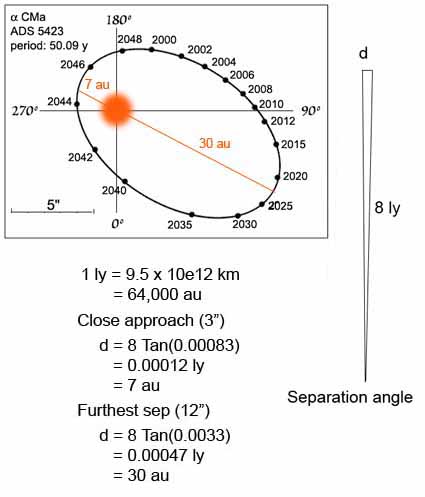The Sirius System
[1] - [2] - [3] - [4] - [5]Sirius A will eventually become a red giant. Estimates of separation distances and the likely size of Sirius A during its red giant phase are shown on this plot of Sirius B's orbit.
If a white dwarf exceeds the Chandrasekhar limit (1.4 solar masses), atomic forces cannot sustain the core against the force of gravity, and it collapses. White dwarfs in binary systems sometimes accrete sufficent matter to exceed the limit. That triggers their collapse to neutron stars and generates type 1a supernovae explosions. If Sirius B were to explode as a type 1a supernova, Earth would be showered with vast amounts of tissue damaging radiation and life on the planet would be seriously imperiled.
Sirius B will grow larger from gravitational accretion of material from Sirius A when it reaches its red giant phase. Fortunately, Sirius B is too far from its companion to accrete sufficient material to reach the Chandrasekhar limit.
